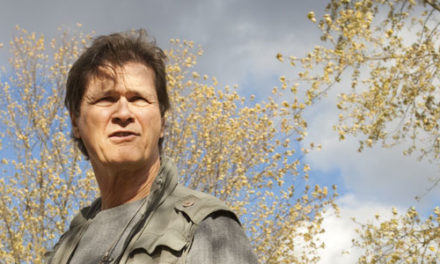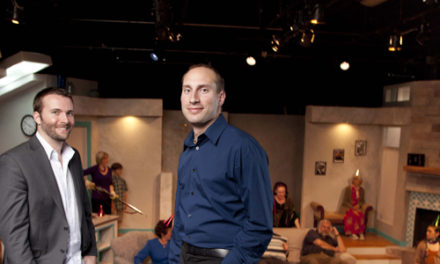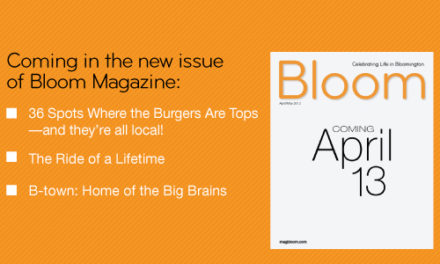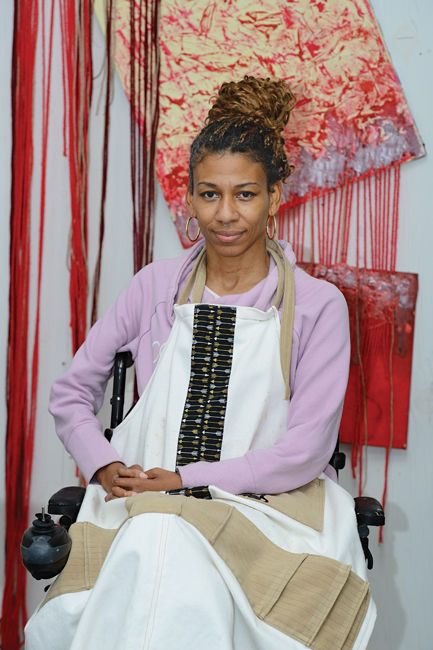
by TRACY ZOLLINGER TURNER
Artist Larissa Danielle’s multimedia work has often been inspired by political and social realities. In 2020, those realities felt particularly overwhelming. “I was really influenced by a lot of the Black trauma that was going on—I don’t want to say until recently, because it’s always going on,” she says.
But as she researched the murder of Breonna Taylor for a sculptural collage called We Are (Breonna), the process “was just heartbreaking,” she says. “I kept thinking, you know, someone I knew could have been her. I could have been her.” Danielle says she decided to “take a step back from ‘reporting the news’” in her artwork and turn toward something healing. “Creating work like that is very emotional. I had to let my heart rest for a second,” she says.
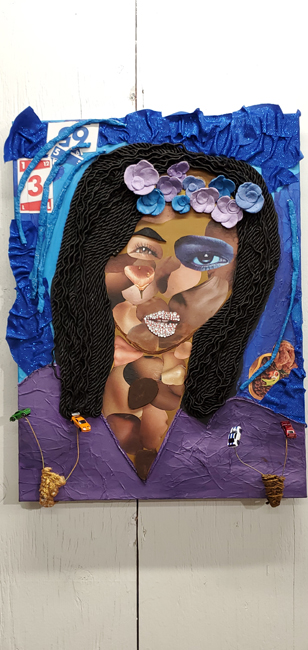
Danielle grew up an Army brat, moving from city to city—and even to Germany— with her brother, mother, and stepfather. An introductory undergraduate art class helped her realize, “I really liked the way drawing and creating made me feel inside.” She raised two daughters in the Washington, D.C., area before she and her wife, Kelly, moved to Bloomington in 2019 so she could pursue her M.F.A. in sculpture at Indiana University.
“I was skeptical about coming to the Midwest because of the lack of diversity, but my experience has been okay so far. I like Bloomington. It’s like a little Bohemian town and reminds me of being back home just a little bit. It seems like everyone’s on the same positivity page here. And I like that.”
When COVID-19 separated her from her campus studio last spring, Danielle discovered a bag of plaster at home and began experimenting with body molds to explore the female form. “I’ve been using me as my inspiration lately,” she says. “I want to reflect the positive, strong side, and beauty of being a Black woman.”
Born with a rare neurological disorder called Charcot-Marie- Tooth, Danielle has used a wheelchair throughout her life. In a recent self-portrait called Robot Legs, she incorporated broken radio parts—a nod to her love of music—into a sculptural painting of her body. “It’s a piece reflecting my perseverance and my disability and how I’ve just overcome a lot of odds,” she says. “When I was younger, I used to imagine myself with like these bionic legs, where I could jump over hills and cars and all kinds of things.”
After years of living around the “constant, 24/7 conversation” of politics in D.C., the presence of a woman in the vice presidency makes her hopeful. “I feel like it’s very inspirational just to have a female of color in power,” she says. “It means a lot to see someone that looks like you representing America and being able to speak for you and changing the things that need to be changed.”


